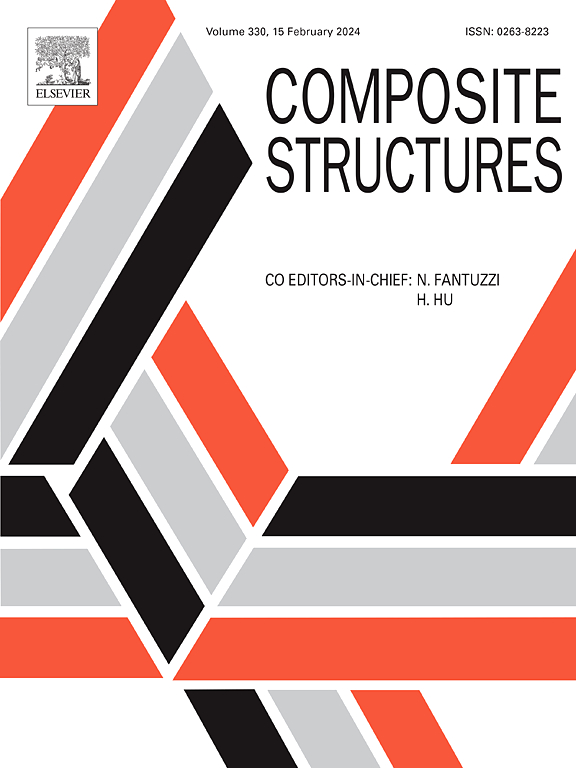Optimal lay-up angle design for balancing impact resistance and energy absorption in filament-wound CFRP tubular structures
IF 6.3
2区 材料科学
Q1 MATERIALS SCIENCE, COMPOSITES
引用次数: 0
Abstract
This study establishes a design framework for optimizing lay-up angles in filament-wound CFRP tubular structures under low-velocity impact (15 J). A systematic experimental–numerical approach integrating drop hammer tests, finite element analysis (FEA), and micro-CT imaging was employed to investigate five lay-up configurations (±15°–±65°). Key findings reveal a trade-off between impact resistance and energy absorption: ±45° lay-ups (moderate-angle regime) achieve balanced performance (80.2 % energy absorption, 29.4 % residual deformation), while ± 65° configurations prioritize energy dissipation (87.6 % absorption) at the cost of increased deformation. FEA-validated micro-CT imaging elucidates damage mechanisms: shallow-angle regimes (<±30°) induce resin-dominated delamination, whereas steep-angle regimes (>±60°) promote fiber fracture through shear-stress redistribution. The study provides a quantitative basis for angle-specific design in aerospace and automotive applications requiring multi-objective performance optimization.
纤维缠绕CFRP管状结构抗冲击与吸能平衡的最佳铺层角设计
本研究建立了低速冲击(15 J)下纤维缠绕CFRP管状结构铺层角优化设计框架。采用系统的实验-数值方法,结合落锤试验、有限元分析(FEA)和微ct成像,研究了±15°-±65°的五种铺层构型。主要研究结果揭示了抗冲击性和能量吸收之间的权衡:±45°布局(中等角度结构)实现了平衡的性能(80.2%的能量吸收,29.4%的残余变形),而±65°布局优先考虑能量消耗(87.6%的吸收),以增加变形为代价。经有限元验证的微ct成像阐明了损伤机制:浅角度(±30°)诱导树脂主导的分层,而大角度(±60°)通过剪切应力重分布促进纤维断裂。该研究为需要多目标性能优化的航空航天和汽车应用的角度特定设计提供了定量依据。
本文章由计算机程序翻译,如有差异,请以英文原文为准。
求助全文
约1分钟内获得全文
求助全文
来源期刊

Composite Structures
工程技术-材料科学:复合
CiteScore
12.00
自引率
12.70%
发文量
1246
审稿时长
78 days
期刊介绍:
The past few decades have seen outstanding advances in the use of composite materials in structural applications. There can be little doubt that, within engineering circles, composites have revolutionised traditional design concepts and made possible an unparalleled range of new and exciting possibilities as viable materials for construction. Composite Structures, an International Journal, disseminates knowledge between users, manufacturers, designers and researchers involved in structures or structural components manufactured using composite materials.
The journal publishes papers which contribute to knowledge in the use of composite materials in engineering structures. Papers deal with design, research and development studies, experimental investigations, theoretical analysis and fabrication techniques relevant to the application of composites in load-bearing components for assemblies, ranging from individual components such as plates and shells to complete composite structures.
 求助内容:
求助内容: 应助结果提醒方式:
应助结果提醒方式:


